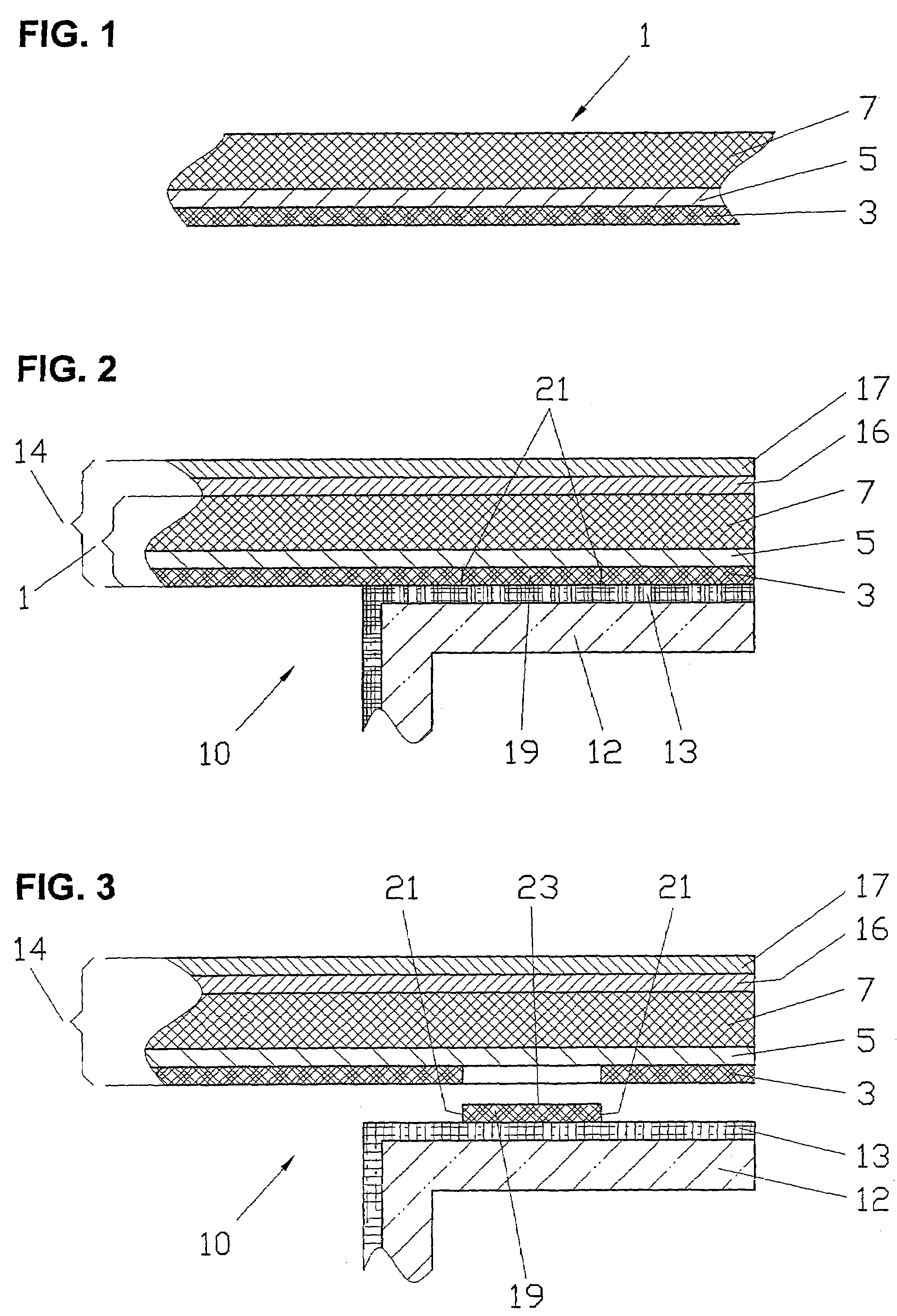Multilayer film
a multi-layer film and film technology, applied in the field of multi-layer films, can solve the problems of not meeting the requirements of packaging foods, unable to achieve film reclosability, and general unsuitability of suggested systems for film production, and achieve the effect of high rigidity
- Summary
- Abstract
- Description
- Claims
- Application Information
AI Technical Summary
Benefits of technology
Problems solved by technology
Method used
Image
Examples
Embodiment Construction
[0027]FIG. 1 shows the minimum configuration of a film 1 of the invention. It is essentially composed of the sealing and peel layer, hereinafter called support layer 3, of connecting layer 5, and of the laminating layer, hereinafter called cover layer 7.
[0028]Support layer 3 is made of low density polyethylene (LD-PE) as it is usual for packaging foils in the food sector. However, high density polyethylene (HD-PE) or a blend of HD-PE and LD-PE are also conceivable. It has turned out that the density of the support layer has to be at least 0.916 g / cm3, preferably at least 0.918 g / cm3 to ensure a clean tearing open of the package (see below). A possible explanation is that a higher proportion of LD-PE or a LD-PE having an insufficient density is too elastic and also has a better adhesion on the connecting layer. For the thickness of the support layer, a range of 0.005 to 0.040 mm has proven appropriate, in particular a thickness of approximately 0.015 mm. A support layer that is too t...
PUM
| Property | Measurement | Unit |
|---|---|---|
| density | aaaaa | aaaaa |
| density | aaaaa | aaaaa |
| thickness | aaaaa | aaaaa |
Abstract
Description
Claims
Application Information
 Login to View More
Login to View More - R&D
- Intellectual Property
- Life Sciences
- Materials
- Tech Scout
- Unparalleled Data Quality
- Higher Quality Content
- 60% Fewer Hallucinations
Browse by: Latest US Patents, China's latest patents, Technical Efficacy Thesaurus, Application Domain, Technology Topic, Popular Technical Reports.
© 2025 PatSnap. All rights reserved.Legal|Privacy policy|Modern Slavery Act Transparency Statement|Sitemap|About US| Contact US: help@patsnap.com

